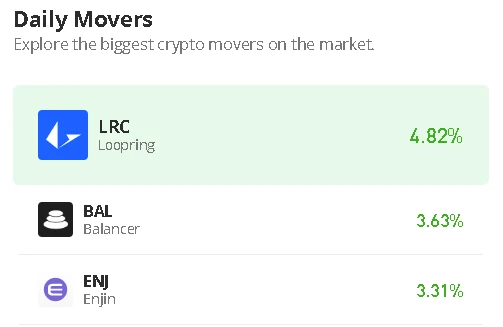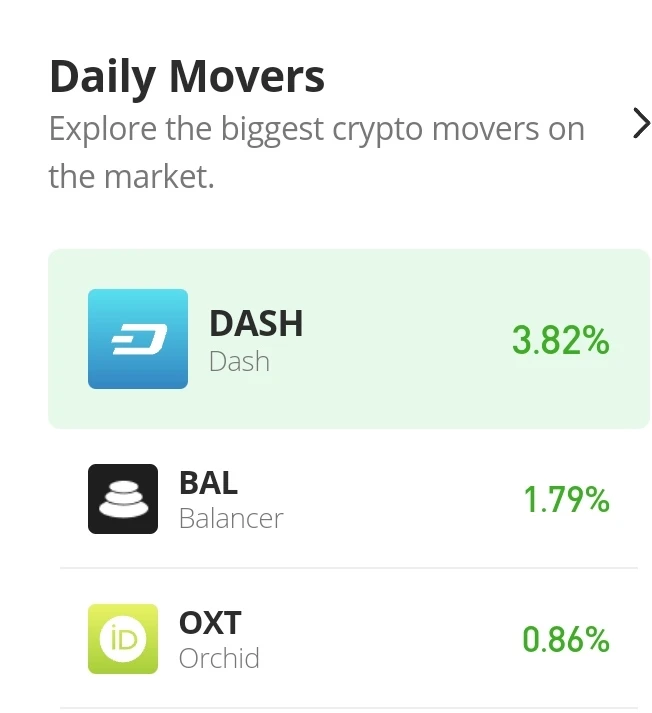How to handle crypto trading gains and losses on your balance sheet
Key takeaways
- Properly accounting for crypto assets on your balance sheet is essential for accurate tax reporting and financial transparency.
- Crypto trading activities should be recorded like stock trading, at fair market value on the day of purchase.
- In some countries, like the US, crypto losses can offset gains, so keeping track of gains and losses is important for reducing taxable income.
- Whether you’re an individual investor or a business, treating cryptocurrencies as assets and documenting them ensures compliance with tax laws and minimizes the risk of errors.
Let’s be real, it’s easy to lose sight of what you’ve actually gained or lost, especially when it comes to crypto and its market volatility and frequent trading activities.
And when it comes to accounting, especially in countries like the United States, it gets trickier because you must reflect those numbers properly on your balance sheet.
If you are running a business that involves crypto or you are just a crypto investor, understanding how to account for your digital assets correctly is crucial.
This guide breaks down the basics of balance sheets, handling crypto gains and losses, and what tax implications you need to account for.
What is a balance sheet, and why is it needed?Think of a balance sheet as a report of your financial health. It shows what you own, owe and what’s left over at a specific point in time. It contains three main parts:
- Assets: What the company owns, such as cash, crypto, real estate, inventory, etc.
- Liabilities: What the company owes, such as loans, unpaid bills and taxes
- Equity: What’s left after subtracting liabilities from assets (net worth).
For example, if you own $50,000 worth of crypto, and at the same time, you owe someone $20,000. In this case, your equity is $30,000.
Balance sheets help you understand your financial position at a glance. They’re essential for filing taxes, attracting investors, applying for loans and complying with regulations.
Balance sheets are essential in countries like the United States, where businesses must report crypto holdings accurately for tax and compliance reasons. Similarly, in the UK, European countries and Canada, balance sheets are important for businesses and are often used by individuals, especially when dealing with crypto assets.
It’s not just for taxes. A well-maintained balance sheet can help you get funding, plan your finances, or simply sleep better knowing where you stand at night.
How do you treat crypto on a balance sheet?One of the most common questions when preparing a balance sheet is, “How to report crypto trading gains and losses on a balance sheet?”
In most jurisdictions, the crypto reporting and taxation rules are still to be decided or clarified. This also applies to the International Financial Reporting Standards (IFRS) and Generally Accepted Accounting Principles (GAAP), which lack definitive guidance concerning cryptocurrency accounting.
As cryptocurrencies are considered assets in many jurisdictions, the fundamental concepts of accounting for assets could apply when preparing a balance sheet involving crypto transactions.
Below is an example of a simplified crypto balance sheet treatment and some helpful pointers that may assist you in accounting for crypto trading in 2025.
Notes to the balance sheet:
- Cash ($15,000): Represents fiat currency (e.g., USD) held in bank accounts or wallets, including proceeds from selling crypto or other revenue.
- Cryptocurrency ($20,000): Recorded at cost basis (fair market value at acquisition, less any impairment). Includes 0.5 Bitcoin (BTC) purchased at $30,000 each ($15,000 total) and 10 Ether (ETH) purchased at $500 each ($5,000 total). No impairment has been recorded, assuming the fair market value (FMV) remains above cost.
- Mining equipment ($5,000): Capitalized cost of crypto mining hardware, net of depreciation. The original cost was $8,000, with $3,000 accumulated depreciation over two years.
- Accounts payable ($2,000): Unpaid bills (e.g., for electricity or supplier services related to crypto mining operations).
- Taxes payable ($1,500): Estimated tax liability for realized crypto gains (e.g., from selling 0.1 BTC at a $2,000 gain, taxed at 20% long-term capital gains rate for simplicity).
- Retained earnings ($36,500): Accumulated profits, including crypto-related income (e.g., mining revenue, realized gains) minus expenses and taxes. Reflects net income from prior and current periods.
When you buy cryptocurrency with fiat money, such as dollars or euros, you’re simply exchanging one type of asset, such as cash, for another, like crypto or stocks. On your balance sheet, cryptocurrency trading activities should be recorded similarly to those of stock trading activities.
As with stocks, you should record cryptocurrency on your balance sheet at its fair market value on the day of purchase. While your cash account displays a credit for the same amount, the cryptocurrency is recorded as a debit to your assets account.
When selling cryptocurrency for fiat moneySelling crypto for fiat creates a change in your balance sheet: Your crypto holdings will be reduced, meaning credited, and your cash will increase, which also means that the account will be credited.
If you sell for more than you paid (the original price of a token), you have a gain; if you sell for less, you record a loss. Both crypto gains and crypto losses should be tracked carefully for tax and reporting purposes.
How to record crypto lossesThe difference is recorded as a loss when you sell crypto at a lower price than you bought it for. In some countries, these losses can lower your taxable income, so it can prove useful to properly document them.
However, even if the asset regains its previous price levels, impairment losses cannot be undone in accordance with GAAP’s accounting rules for intangible assets.
This contrasts with IFRS, where certain intangible assets can be revalued upward under IAS 38 if an active market exists. However, crypto markets are volatile, and IFRS guidance on crypto revaluation remains unclear, so most entities stick to cost-less impairment. Businesses should consult local accounting standards and auditors for precise treatment.
How to record crypto profitsIf you receive cryptocurrency as payment for goods, services or other activities, it’s treated as income at the fair market value on the date you receive it.
This value is recorded as revenue and added to your assets. Later, if you sell or swap the crypto, any difference in value will result in a capital gain or loss.
How to record crypto miningWhen cryptocurrency mining income occurs, it should be reported at the currency’s fair market value. This revenue should be shown on your income statement since it increases your assets.
Similar to other revenue-generating activities, companies engaged in cryptocurrency mining are required to report their crypto profits on their balance sheet. Their mining income account will be credited as a result. Subsequently, the newly generated digital asset has to be recorded in their accounts at its fair market value.
Additionally, costs related to mining operations should be recorded. For example, the cash account needs to be credited if cash is spent to cover mining costs. The purchase of mining equipment, which requires capitalization and amortization, will subsequently be deducted from the associated asset account or otherwise documented as a cost for items like utilities and supplies.
Using cryptocurrency to pay suppliersPaying suppliers or vendors with cryptocurrency is like selling the asset since you have to recognize any gain or loss in relation to its original value.
Therefore, the difference between the asset’s book value and its expense will be recorded as a capital gain.
How to record transaction fees and exchange ratesIt’s critical to keep track of transaction costs and exchange rate fluctuations when trading or exchanging cryptocurrencies. Fees should be shown as an expense on the balance sheet since they lower your net gain or increase your loss.
Changes in exchange rates may also have an impact on the value recorded when converting cryptocurrency into fiat, which could have an effect on your taxes and capital gains.
Did you know? Cryptocurrency held for more than a year can be categorized as a long-term asset on your balance sheet in some jurisdictions, which may result in better tax treatment than short-term holdings.
How are cryptocurrencies taxed?Taxation of cryptocurrencies varies by country, but your balance sheet plays a crucial role in tracking taxable events.
Under current GAAP, crypto is recorded at cost and tested for impairment. IFRS allows revaluation in rare cases, but most entities use the cost model. For traders holding crypto as inventory, GAAP (ASC 330) or IFRS (IAS 2) may apply, with FMV adjustments. The lack of definitive guidance means businesses must apply judgment and document assumptions clearly.
In the US, crypto is treated as property, with taxes applied to capital gains when selling or trading. The Internal Revenue Service requires reporting on your balance sheet; losses can offset gains.
Also, the US introduced Form 1099-DA in 2025 for crypto brokers to report transactions, increasing compliance requirements.
In the UK, cryptocurrencies are taxed under capital gains for individuals, while income tax may apply if trading is frequent or when crypto is received as income, such as through mining, staking or as payment for services.
Canada follows a similar approach, taxing crypto as capital gains (50% inclusion rate) or business income for active traders. Mining income is taxable as income.
In Germany, long-term holders (over a year) pay no tax on capital gains, but short-term trades over 600 euros are taxed. Notably, the EU’s Markets in Crypto-Assets (MiCA) regulation (effective 2024) standardizes crypto reporting, impacting balance sheet documentation in member states.
Accounting for Ethereum transactionsEthereum, the backbone of decentralized finance (DeFi) and smart contracts, has unique accounting needs. Here’s how to handle common Ethereum transactions on your balance sheet:
- Staking rewards: Staking ETH on Ethereum’s proof-of-stake network generates rewards, treated as income at FMV when received. For example, receiving 0.1 ETH as a staking reward debits your “Cryptocurrency” asset account and credits “Revenue” on your income statement. Selling staked ETH later triggers a capital gain or loss.
- Gas fees: Ethereum transactions incur gas fees, which are expenses. Record these as a debit to “Transaction Fees” (an expense account) and a credit to “Cash” or “Cryptocurrency” if paid in ETH. For example, a $50 gas fee paid in ETH reduces your ETH holdings and is expensed.
- DeFi transactions: Yield farming or liquidity provision (e.g., on Uniswap) generates rewards, treated as income at FMV when received. For example, earning 100 UNI (UNI) tokens ($1,000) debits “Cryptocurrency” and credits “Revenue.” Track gas fees and token swaps as expenses or taxable events.
- ERC-20 tokens: Ethereum-based tokens (e.g., USDC, LINK) are separate assets. Record each at its FMV at acquisition, like ETH, and track them individually to avoid confusion.
Accurate tracking of Ethereum transactions ensures compliance, especially with increased IRS scrutiny on staking and DeFi in 2025.
Tools and best practices for crypto accountingManaging crypto transactions can be daunting, but these tools and tips simplify the process:
- Accounting software: Use platforms like CoinTracker, Koinly or CryptoTaxCalculator to track Ethereum transactions, calculate gains/losses, and generate tax reports. These tools integrate with wallets and exchanges, ensuring accurate FMV records.
- Regular reconciliation: Match your balance sheet’s crypto holdings to wallet/exchange records monthly to catch errors, especially for gas fees or staking rewards.
- Work with professionals: Crypto tax rules, especially for Ethereum’s DeFi and staking, are complex. Consult a crypto-savvy accountant to ensure compliance with IRS, His Majesty’s Revenue & Customs or other regulations.
- Document everything: Keep records of every Ethereum transaction, including FMV, gas fees and staking rewards, to prepare for audits or Form 1099-DA reporting in 2025.
By staying organized, you’ll minimize errors and stress when filing taxes or preparing financial statements.




















